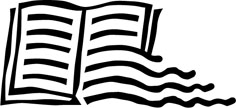Classical Midrash
In his discussion of classical rabbinic midrashim in Back to the Sources, Barry Holtz defines midrash as both the process and the product of interpreting biblical—and occasionally other sacred—texts. Of the midrashic literature from 70 through 1200 CE, with which he is concerned, he states,
the central issue behind the emergence of Midrash [is] the need to deal with the presence of cultural or religious tension and discontinuity. Where there are questions that demand answers, and where there are new cultural and intellectual pressures that must be addressed, Midrash comes into play as a way of resolving crisis and reaffirming continuity with the traditions of the past. (Holtz 179)
During this period, the rabbis were confronted with Hellenic thought, conquest by Rome, the destruction of the Temple, the loss of the Land of Israel, and the rise first of Christianity and then of Islam. These events brought them challenging new realities, new ideas, and new values—any of which could have spelled the end of Judaism as they knew it. Their genius was to read back into their ancient, immutable, foundational text resolutions of those conflicts that left the text intact, but to interpret it viably for the new worlds in which they found themselves. Most importantly, when they did so, they did not see the “new” interpretation as new at all—but simply as another meaning that was lying in wait, just under the surface, to be uncovered. As the Mishnah, the earliest stratum of the Talmud, famously states: “Turn [the Bible] and turn it again, for everything is contained therein” (Mishnah Pirkei Avot 5:25).
The unique feature of the Bible that permitted this sacred sleight of hand is its porosity—its gaps and contradictions—the laconic style described by Erich Auerbach (9). The Zohar (Vol. 17, 20:122) used the metaphor of the text written in black fire on white fire, implying that the received text and the midrashim that reside in the interstices are inherently interlocked and interdependent. Nor does the process end with classic rabbinic Judaism. As Holtz observes, “It is the genius of the rabbis that gave birth to this marvelous tool, and it is through interpretation that Judaism gained its strength in the past and will, some have argued, gain its strength in the future” (186).
WORKS CITED
Auerbach, Eric. Mimesis. Garden City, NY: Doubleday, 1953.
Holtz, Barry. “Midrash.” Back to the Sources: Reading the Classical Jewish Texts. Ed. Barry Holtz. New York: Summit Books, 1984. 176-211.
Excerpt above reprinted from Rivkah Walton’s “Lilith’s Daughters, Miriam’s Chorus: Two Decades of Feminist Midrash” in Religion & Literature, (University of Notre Dame), Vol. 43, No. 2 (summer 2011), pp. 115-127.
For More Information
For a guide to classical midrashic literature, see Hebrew Union College – JIR’s Literature & Text Resource Guide to Rabbinic Midrash.
Recommended Reading
For an excellent guide to classical midrash, see the chapter by Barry Holtz, “Midrash” in Back to the Sources: Reading the Classical Jewish Texts. Ed. Barry Holtz. New York: Summit Books, 1984. 176-211.
